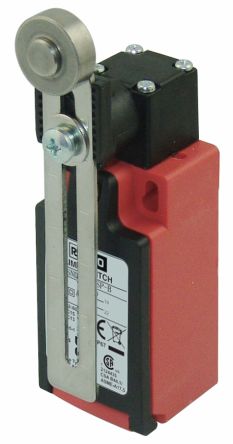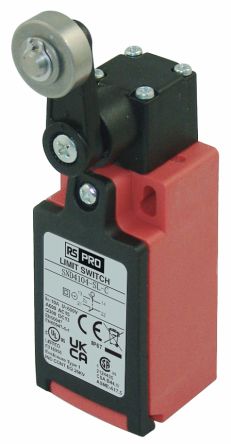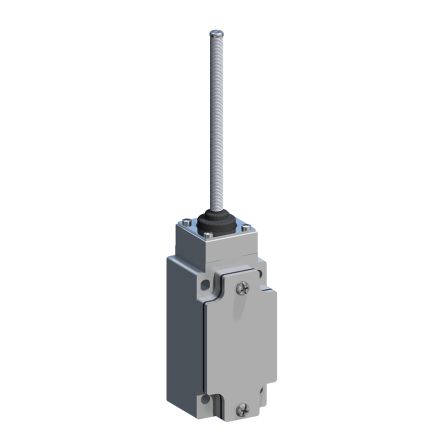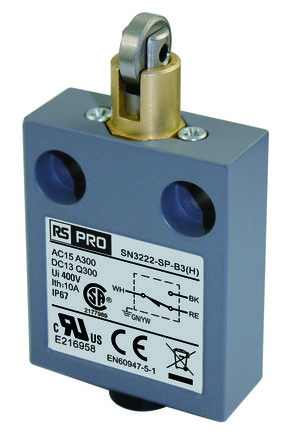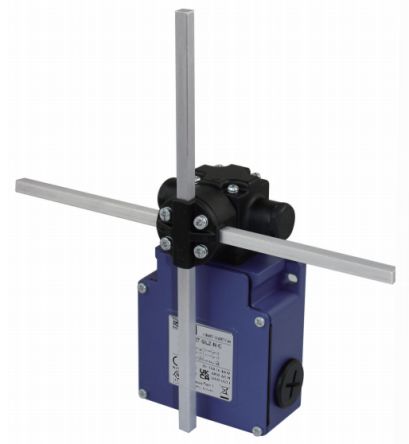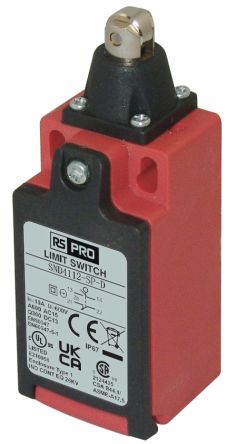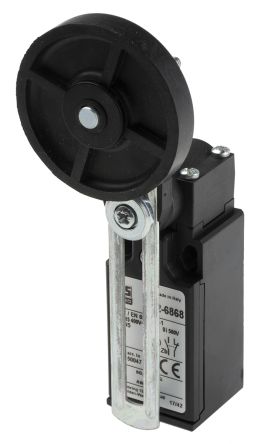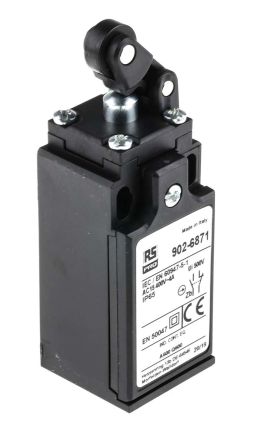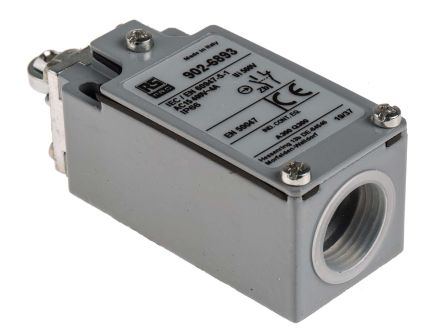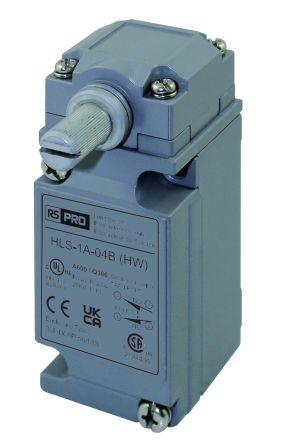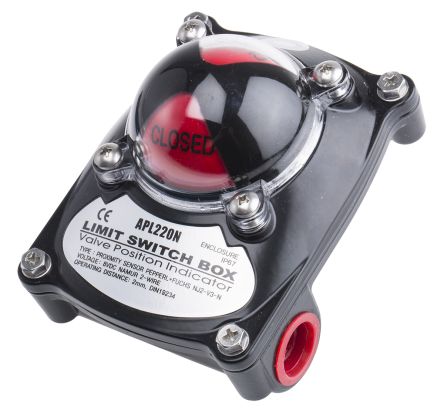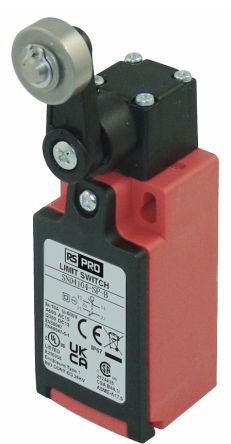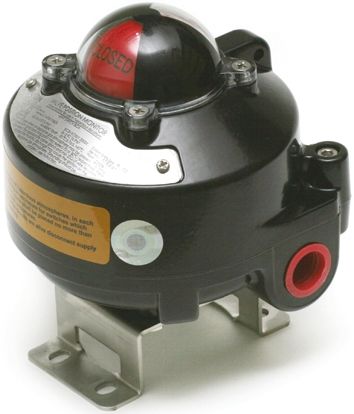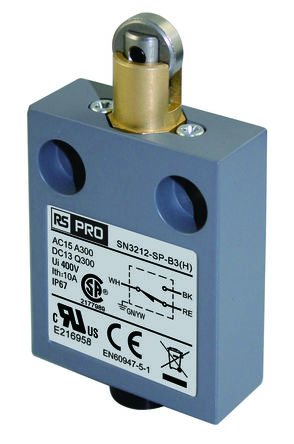- Automation & Control Gear
- Cables & Wires
- Enclosures & Server Racks
- Fuses & Circuit Breakers
- HVAC, Fans & Thermal Management
- Lighting
- Relays & Signal Conditioning
- Switches
- Batteries & Chargers
- Connectors
- Displays & Optoelectronics
- ESD Control, Cleanroom & PCB Prototyping
- Passive Components
- Power Supplies & Transformers
- Raspberry Pi, Arduino, ROCK, STEM Education & Development Tools
- Semiconductors
Limit Switches
Limit switches are contact proximity sensor devices that consist of an actuator mechanically linked to a set of output contacts. When an object comes into contact with the actuator, the device operates the contacts to make or break an electrical connection.
Limit switch makeup
Limit switches are made up of three key components:
- Actuator Head: The actuator is the part of the switch that makes physical contact with the object. In some limit switches, the actuator is attached to an operating head that translates a rotary, linear, or perpendicular motion to open or close the electrical contacts of the switch.
- Switch Body: The switch body is the component containing the electrical contact mechanism. The contacts within the body open or close the electrical circuit when the actuator is activated.
- Receptacle/Terminals: The component containing the terminal screws or screw/clamp assembly necessary for wiring purposes.
Actuator types
Limit switches on RS Malaysia are available with a wide range of actuator types and are offered at pocket-friendly prices. The type of actuator used can be determined by the mounting position, the force required, and the objects to be detected.
- Rotary Lever: With lever actuators, a cam or plate hits the end of the lever arm, which in turn rotates a shaft and operates the contacts in the switch. The rotation may be spring returned (momentary) or maintained.
- Plunger: Plunger types are best where short, controlled machine or door movements are present or mounting space does not permit a lever type.
- Cat Whisker or Coil Spring: Longer actuators with a coil wire that can be moved/bent in multiple directions. Typically used in conveying applications to count objects as they pass by.
- Forked: Used with maintained contacts and consists of two roller levers. One roller will trip the limit switch, and when the second is moved in the opposite direction, it will reset the switch.
Door limit switch
A common application of such limit switches is when they act as sensors that allow for precise control and monitoring of door operations. Such limit switches typically feature a lever, knob, and plunger mechanism. When an object makes contact with the switch, it triggers the actuator to move, establishing or interrupting an electrical connection to control the opening or closing of doors.
What are the applications of limit switches?
Other applications include using limit switches to count items or materials. For instance, on an assembly line, a limit switch can activate its actuator to move an item away when it senses that the correct number of components has been added. Limit switches can also function as safety interlocks to halt machine parts from moving past a certain point to avoid malfunctions and enhance operational safety.
What are the advantages of limit switches?
Limit switches are often favoured across various industrial environments for their straightforward and rugged construction, which is reliable and supports easy installation. Notably, these limit switches function well with low power consumption and can manage high-inductance loads. With robust electrical contacts, they can also handle higher current levels directly without requiring secondary relay control. This combination of features makes them handy tools for electricians.
